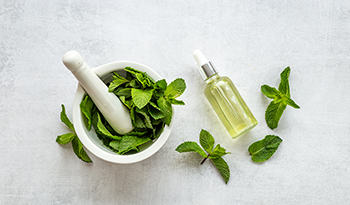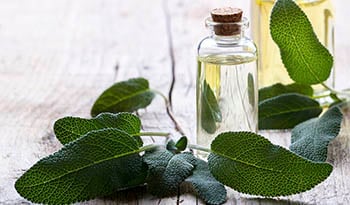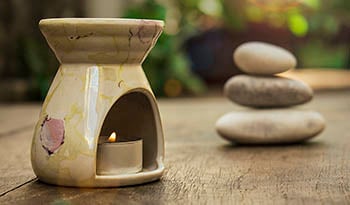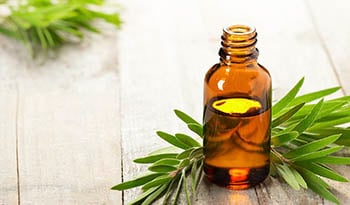Food-Grade Essential Oils
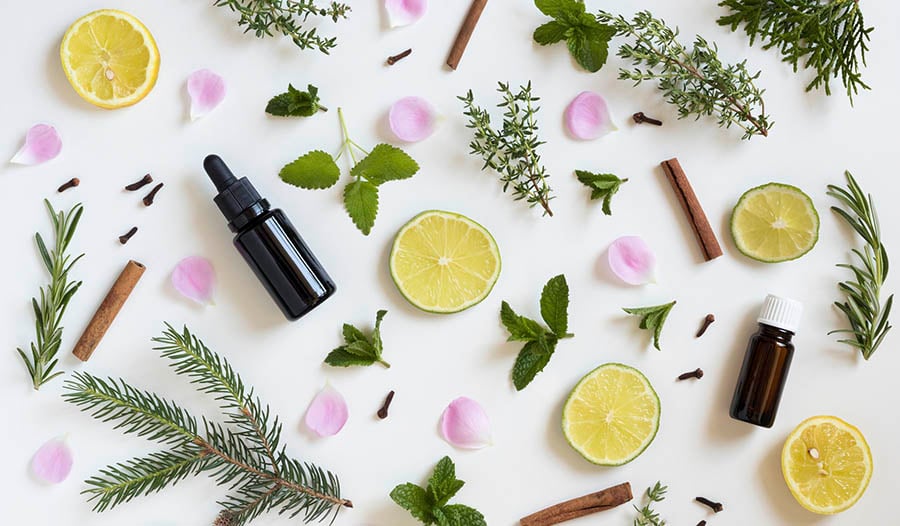
Since many oils are concentrated, consider 1 drop being equal to 1 teaspoon of a spice or herb. Due to their concentration, dilution is important. Do not consume directly. It is always IMPORTANT to read the essential oil label before adding to food or ingesting. If labeled "NOT FOR INTERNAL USE" do not consume orally nor with drink or foods. Most essential oils that can be used internally are labeled by the FDA as GRAS (Generally Regarded as Safe). Always read the label before consuming. Essential oils should be kept away from young children. If pregnant or nursing, consult with your healthcare provider before using. |
Since the beginning of human civilization, people have realized the benefits of essential oils. The ancient Egyptians used them during ceremonial celebrations and the mummification process, and throughout history, these oils continued to be highly valued and frequently used as fragrances, given as gifts, and even traded as currency.
Can You Ingest Essential Oils?
The popularity of essential oils continues in our modern times. Many people apply them topically to skin or add a few drops to bathwater while others use a diffuser to disperse the sweet aromas of these oils into work or living quarters. However, there's another great way to enjoy their health benefits: add edible essential oils to food. It's really easy and flavorful!
These food-grade essential oils can be taken internally—they can either be placed in a glass of cold water and consumed or used as a meal flavoring.
Anise
An edible essential oil used since Roman times. It comes from the herbal plant called aniseed or anise. Anise, or Pimpinella anisum, has many benefits:
- Aids in digestive health when consumed orally and also helps ease symptoms of irritable bowel syndrome (IBS), according to a study in the Journal of Ethnopharmacology
- Freshens breath with just 2 –3 drops added to water for gargling
- Flavors foods, including many popular baked goods, sauces and more
- Relieves pain when applied topically to sore muscle or joints
- Enhances libido when consumed orally
- Improves memory, according to a 2016 study
- Can help with chest colds and respiratory infections when inhaled
Directions: Can place a few drops in a glass of water to take orally.
Bergamot
Bergamot (Citrus aurantium var. or Citrus bergamia) is an essential oil derived from citrus. It has been used since the days of antiquity. When mixed with black tea, it results in Earl Grey, a commonly consumed tea worldwide. Benefits include:
- Aids in digestion in those with inflammatory bowel disease, according to a study in Clinical Nutrition
- Helps treat fatty liver, according to a 2017 study in World Journal Gastroenterology
- Lowers cholesterol and reduces heart disease risks, according to a 2015 study
- Has antibacterial properties, including killing h. pylori, the bacteria that causes stomach ulcers and increases risk for stomach cancer, according to a 2016 study
- Improves brain function in those with schizophrenia, according to a study in the Journal of Clinical Psychopharmacology
Directions: Can also place a few drops in a glass of water to take orally.
Clove
Derived from the clove tree, clove, or (Syzygium aromaticum), is indigenous to Southeast Asia and Indonesia. It has numerous health benefits, according to a 2014 study, including:
- Food flavoring in baked goods, teas, and sauces
- When applied topically to wounds, its antibacterial properties can help prevent infection
- Studies show pain relief properties when applied topically to sore joints and muscles, and people have used it for toothaches since the 13th century
- Can be applied topically to the skin to keep insects away, but it must be diluted.
- Oral thrush treatment
Note: If you are on blood thinners, consult with your healthcare provider before ingesting.
Eucalyptus
Eucalyptus, also known as eucalyptus globulus, eucalyptus sideroxylon, and eucalyptus torquata, is native to Australia, where Aborigines have used this indigenous plant to help treat sinus infections, respiratory infections, and pain for centuries. Avoid direct consumption of the concentrated oil—it must be diluted.
Benefit include:
- Food flavoring in teas, jellies and sauces
- Upper respiratory Infection relief. Inhalation of an herbal mixture containing eucalyptus minimizes symptoms of infection, according to studies
- Antibacterial properties, according to a 2012 study that showed protection against bacterial skin infections when eucalyptus was applied topically
- Can kill fungus when applied topically
- Natural deodorant when applied topically to armpits
Directions: Can also place a few drops in a glass of water to take orally. Note: Eucalyptus blends well with lavender and lemon oils if diffusing.
Ginger
This herb has been used for centuries. It is used in foods but also as an essential oil. Ginger (Zingiber officinale) has many health benefits:
- Food flavoring in baked goods, teas, sauces, dressings, marinades and much more
- Digestion aid, especially when consumed as a tea
- Frequently used by pregnant women and those undergoing chemotherapy for nausea, according to studies.
- Laxative effect
- Antibacterial properties
- Pain relief and anti-inflammatory properties when applied topically to affected joints
Directions: Can also place a few drops in a glass of warm water to take orally.
Grapefruit
The grapefruit (Citrus paradisi) originated in the Caribbean island of Barbados and is a hybrid of an orange and pomelo fruit. China is currently the world’s leading producer of grapefruit while the United States is second. Grapefruit essential oil is extracted from the fruit and has many benefits:
- Food flavoring in teas, dressings, baked goods and more
- Stress and anxiety relief, according to a 2017 study in Complementary Therapies in Medicine, which showed those undergoing a colonoscopy procedure felt less anxiety when grapefruit essential oil was used with a diffuser.
- Acne treatment when applied topically, thanks to it antimicrobial properties
Directions: Can also place a few drops in a glass of water to take orally.
Lavender
Lavender’s (Lavandula officinalis) sweet smell is probably one of the most well-known of all essential oils. Employed for thousands of years by cultures all over the world, its earliest recorded use was by the Greeks and Romans. Lavender can be used for the following:
- Food flavoring in baked goods, meat rubs, teas and more
- Helps minimize the effects of nausea. Place a drop behind your ears or consider consuming a drop in your mouth or with a small glass of water
- Aids in the digestive process
- Inhaling lavender can help reduce physical and mental stress levels
- Helps improve the quality of sleep if used topically and inhaled
- According to a 2017 study, lavender lowered blood pressure after open-heart surgery while a 2015 study also showed blood pressure benefits
- Helps reduce pain from burns. Apply directly or mix with coconut oil
- Apply directly on dry skin or mix with coconut oil to relieve symptoms of eczema
- Apply topically to help prevent or treat acne
- Helps provide relief to sore muscles and joints when applied during a massage
- A 2017 study in the Journal of Hand Therapy showed lavender reduced pain when applied topically to the wrists, relieving carpal tunnel syndrome symptoms
- Studies using animal models show lavender oil can help with hair growth
Directions: Can also place a few drops in a glass of water to take orally. Lavender essential oil blends well with clove and rosemary oils when diffused.
Lemon
Lemon is a familiar scent, sour and sweet at the same time. This essential oil has many uses and is widely used in beauty products due to its antioxidant properties.
- Can be added to foods, including teas, sauces, yogurts, vegetable seasoning, baked goods and many more
- Taken with a glass of water, it can stimulate the digestive process
- Antioxidant properties help kill viruses in the throat. It can be gargled
- Mixed with water, it can be used to gently clean surfaces
- Mixed with coconut oil and applied to the skin, it helps protect against oxidation.
Directions: Use with a diffuser. Inhale. Place 2-3 drops in diffuser along with water. Inhale. Can also place a few drops in a glass of water to take orally.
Lemon blends well with eucalyptus oil if being diffused.
Oregano
Oregano (Origanum vulgare) is a flowering plant originally from the Mediterranean region. It has been used for centuries and has numerous health benefits.
- Oregano protects the gut from damage and helps create a healthier gut and alleviate leaky gut symptoms.
- Can be added to foods, including sauces, meats, dressings, vegetable seasonings and much more
- Studies show oregano prevents atherosclerosis or clogging of arteries.
- Helps with digestive issues when taken orally
- Anti-parasite properties
- Protects against fungal infections, according to research in Scientific Reports
Peppermint
Peppermint is a well-known herb and essential oil. It is actually a hybrid of watermint and spearmint. Its smell is sharp and fresh, and one of its main components is menthol. In recent times, it has been used as flavoring in chewing gum. Peppermint is native to Europe and has numerous health advantages.
- Peppermint oil helps improve symptoms in those with Irritable Bowel Syndrome (IBS) when taken internally. Can be consumed as an essential oil in water or in capsule formula
- Can be used to flavor foods and teas
- Can be helpful with tension headaches when applied to back of the neck or diffused
- Applied topically, it can help with fungal nail infections
- A 2012 study showed protection against skin infections
- Inhalation of an herbal mixture containing peppermint minimized symptoms of upper respiratory infections infection
- Topically applied, peppermint helps minimize itching due to pregnancy, according to studies.If you are pregnant, discuss use with your healthcare provider before using either topically or orally.
- Topically applied, it helps minimize skin irritation associated with eczema
- A 2014 study demonstrated when applied to the scalp, it could help with hair growth
Directions: Can also place a few drops in a glass of water to take orally.
Rosemary
Rosemary is a common herb that is often grown in home gardens. It has been shown to have many health benefits and, according to an article in The New York Times, rosemary plays a big part in the diet of one of the world’s healthiest and oldest living populations—those who reside in Acciaroli, Italy. Rosemary can be used for the following:
- Can be added to food, including sauces, dressings, marinades, and vegetable seasonings
- A 2017 study concluded, “Inhalation of the rosemary essential oil increased the memorization of numbers”
- A 2016 study using animals showed improved brain function in injured subjects
- A 2015 study showed improved hair growth when applied topically to the scalp. It took six months, however, for growth to be seen.
- Inhalation of an herbal mixture containing rosemary minimized symptoms of upper respiratory infection
- This essential oil helps to relax muscles and alleviate muscle spasms when used during a massage
- Rosemary is a potent antioxidant, according to studies
- CAUTION: Some may be sensitive to this essential oil when applied topically, skin reactions may occur
Directions: Can also place a few drops in a glass of water to take orally. Rosemary blends well with lavender and peppermint oils.
Spearmint
Also known as garden mint. Native to Europe and Asia, spearmint (Mentha spicata, synonym Mentha viridis) has been used for centuries for its flavor. In the late 1800s, Charles Wrigley added spearmint to the Mayan and Aztec plant extract known as chicle. This rubbery extract is better known today as chewing gum. The Spanish word for chewing gum is chicle. Spearmint has numerous health benefits and is widely used by many.
- Can be consumed as a tea or by adding a few drops of the oil to warm water
- Helps improve memory, according to a study in Journal of Alternative and Complementary Medicine
- Has antifungal properties
- Helps reduce inflammation in joints according to BMC Complementary and Alternative Medicine Journal
- Used to treat sinus infections in Turkish folk medicine
- Helps optimize hormone levels in women, according to a study in Phytotherapy Research
Directions: Can also place a few drops in a glass of water to take orally.
Thyme
Also known as red thyme, thyme (Thymus vulgaris) is an ancient herb with medicinal properties. It was used by the Egyptians during embalming and by the Romans throughout Europe to help purify living quarters. This medicinal herb was first mentioned in the Ebers Papyrus, an ancient medical text dating from the 16th century BC.
The thymus gland, which helps the immune system to mature, was named thymus due to its resemblance to the thyme leaf. Ironically, thyme helps fight infections and has both antibacterial and anti-viral properties. Thymol is a well-known active ingredient of the herb.
- Can be added to food, including soups, sauces, dressing, and more
- Use in moderation as a high dose may cause an upset stomach
Blends well with rosemary
Directions: Use with a diffuser. Place 2-3 drops in diffuser along with water. Inhale. Can also place a few drops in a glass of water to take orally.
Wintergreen
Wintergreen (Gaultheria procumbens) herb was used by indigenous cultures of North America. Infused in tea, it was consumed to help eliminate aches, pain, and sore throats caused by viral infections. The leaves were also chewed by Native Americans to help prevent tooth decay. Caution: Check with your doctor before consuming if you are on blood thinners.
- Can be added to food for additional flavoring
- Can be consumed as a tea
Directions: Use with a diffuser. Place 2-3 drops in diffuser along with water. Inhale. A few drops can be placed in a glass of water to take orally.
Other edible essential oils include:
References:
- Journal of Ethnopharmacology. 2016 Dec 24;194:937-946. doi: 10.1016/j.jep.2016.10.083. Epub 2016 Nov 1.
- Mol Neurobiol. 2016 Nov;53(9):6557-6567. doi: 10.1007/s12035-016-9693-9. Epub 2016 Jan 14. Anise improves memory
- Clinical Nutrition. 2015 Dec;34(6):1146-54. doi: 10.1016/j.clnu.2014.11.012. Epub 2014 Nov 27.
- Liu C, Liao J-Z, Li P-Y. Traditional Chinese herbal extracts inducing autophagy as a novel approach in therapy of nonalcoholic fatty liver disease. World Journal of Gastroenterology. 2017;23 (11):1964-1973. doi:10.3748/wjg.v23.i11.1964.
- Toth PP, Patti AM, Nikolic D, et al. Bergamot Reduces Plasma Lipids, Atherogenic Small Dense LDL, and Subclinical Atherosclerosis in Subjects with Moderate Hypercholesterolemia: A 6 Months Prospective Study. Frontiers in Pharmacology. 2015;6:299. doi:10.3389/fphar.2015.00299.
- Phytotherarpy Research. 2016 Sep;30(9):1404-11. doi: 10.1002/ptr.5646. Epub 2016 May 24.
- Journal Clinical Psychopharmacology. 2017 Aug;37(4):468-471. doi: 10.1097/
- Cortés-Rojas DF, de Souza CRF, Oliveira WP. Clove (Syzygium aromaticum): a precious spice. Asian Pacific Journal of Tropical Biomedicine. 2014;4(2):90-96. doi:10.1016/S2221-1691(14)60215-X.
- Phytomedicine. 2012 Aug 15;19(11):969-76. doi: 10.1016/j.phymed.2012.05.014. Epub 2012 Jun 26.
- Lete I, Allué J. The Effectiveness of Ginger in the Prevention of Nausea and Vomiting during Pregnancy and Chemotherapy. Integrative Medicine Insights. 2016;11:11-17. doi:10.4137/IMI.S36273.
- Intorasoot A, Chornchoem P, Sookkhee S, Intorasoot S. Bactericidal activity of herbal volatile oil extracts against multidrug-resistant Acinetobacter baumannii. Journal of Intercultural Ethnopharmacology. 2017;6(2):218-222. doi:10.5455/jice.20170411091159. (Ginger’s antimicrobial properties)
- Salamati A, Mashouf S, Mojab F. Effect of Inhalation of Lavender Essential Oil on Vital Signs in Open Heart Surgery ICU. Iranian Journal of Pharmaceutical Research : IJPR. 2017;16(1):404-409.
- Complement Ther Med. 2015 Jun;23(3):331-8. doi: 10.1016/j.ctim.2014.12.001. Epub 2014 Dec 11.
- Complement Ther Clin Pract. 2016 Nov;25:75-80. doi: 10.1016/j.ctcp.2016.08.002. Epub 2016 Aug 3.
- Journal of Hand Therapy. 2017 Aug 10. pii: S0894-1130(16)30251-4. doi: 10.1016/j.jht.2017.07.004.
- Lee BH, Lee JS, Kim YC. Hair Growth-Promoting Effects of Lavender Oil in C57BL/6 Mice. Toxicological Research. 2016;32(2):103-108. doi:10.5487/TR.2016.32.2.103.
- Hong-kui Wei, Gang Chen, Ruo-Jing Wang, Jian Peng, Oregano essential oil decreased susceptibility to oxidative stress-induced dysfunction of intestinal epithelial barrier in rats, In Journal of Functional Foods, Volume 18, Part B, 2015, Pages 1191-1199
- Accessed February 14th, 2018 http://www.sciencedirect.com/science/article/pii/S0278691510001754
- Puškárová A, Bučková M, Kraková L, Pangallo D, Kozics K. The antibacterial and antifungal activity of six essential oils and their cyto/genotoxicity to human HEL 12469 cells. Scientific Reports. 2017;7:8211. doi:10.1038/s41598-017-08673-9.
- Phytomedicine. 2012 Aug 15;19(11):969-76. doi: 10.1016/j.phymed.2012.05.014. Epub 2012 Jun 26.
- Ben-Arye E, Dudai N, Eini A, Torem M, Schiff E, Rakover Y. Treatment of Upper Respiratory Tract Infections in Primary Care: A Randomized Study Using Aromatic Herbs. Evidence-based Complementary and Alternative Medicine : eCAM. 2011;2011:690346. doi:10.1155/2011/690346.
- Akhavan Amjadi M, Mojab F, Kamranpour SB. The Effect of Peppermint Oil on Symptomatic Treatment of Pruritus in Pregnant Women . Iranian Journal of Pharmaceutical Research : IJPR. 2012;11(4):1073-1077.
- Oh JY, Park MA, Kim YC. Peppermint Oil Promotes Hair Growth without Toxic Signs. Toxicological Research. 2014;30(4):297-304. doi:10.5487/TR.2014.30.4.297.
- Accessed January 27, 2018 https://www.nytimes.com/2016/10/20/world/what-in-the-world/rosemary-and-time-does-this-italian-hamlet-have-a-recipe-for-long-life.html?_r=0
- O.V. Filiptsova, L.V. Gazzavi-Rogozina, I.A. Timoshyna, O.I. Naboka, Ye.V. Dyomina, A.V. Ochkur, The essential oil of rosemary and its effect on the human image and numerical short-term memory, In Egyptian Journal of Basic and Applied Sciences, Volume 4, Issue 2, 2017, Pages 107-111.
- Neuroscience Letter. 2016 May 27;622:95-101. doi: 10.1016/j.neulet.2016.04.048. Epub 2016 Apr 22.
- Skinmed. 2015 Jan-Feb;13(1):15-21. Rosemary helps hair growth
- Pathophysiology. 2017 Sep 14. pii: S0928-4680(17)30005-6. doi: 10.1016/j.pathophys.2017.08.002.
- Herrlinger KA, Nieman KM, Sanoshy KD, et al. Spearmint Extract Improves Working Memory in Men and Women with Age-Associated Memory Impairment. Journal of Alternative and Complementary Medicine. 2018;24(1):37-47. doi:10.1089/acm.2016.0379.
- Pearson W, Fletcher RS, Kott LS, Hurtig MB. Protection against LPS-induced cartilage inflammation and degradation provided by a biological extract of Mentha spicata. BMC Complementary and Alternative Medicine. 2010;10:19. doi:10.1186/1472-6882-10-19.
- Karaca, N., Demirci, B. & Demirci, F. (2018). Evaluation of Lavandula stoechas L. subsp. stoechas L., Mentha spicata L. subsp. spicata L. essential oils and their main components against sinusitis pathogens. Zeitschrift für Naturforschung C, 0(0), pp. -. Retrieved 3 Mar. 2018, from doi:10.1515/znc-2017-0150
- Phytotherapy Research. 2007 May;21(5):444-7.
- Roy S., Chaurvedi P., Chowdhary A. Evaluation of antiviral activity of essential oil of Trachyspermum Ammi against Japanese encephalitis virus. Pharmacognosy Research. 2015;7(3):263–267. doi: 10.4103/0974-8490.157977.
DISCLAIMER:This Wellness Hub does not intend to provide diagnosis...








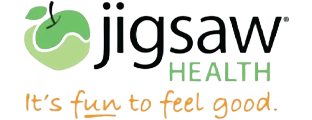










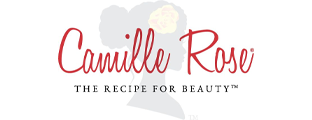














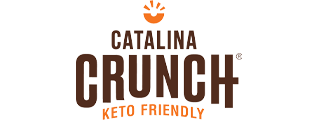













































 Table of Contents
Table of Contents



